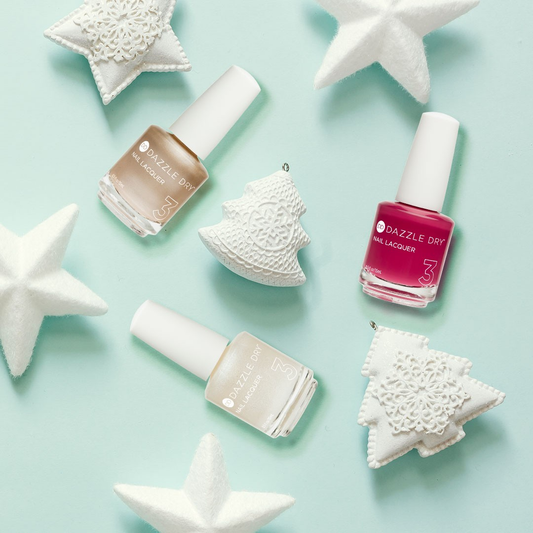Why Use Non-Toxic Nail Polish?


Nail polish is likely something you have never thought of as toxic. However, cosmetic ingredients—except for color additives—within nail polishes do not have to obtain FDA approval to go on the general market. Nail polishes and other nail-related products also should include any applicable warnings you might need to be aware of, so you know if you can use them safely.
What is Nail Polish Made of and What Are The Risks Associated With These Ingredients?
While all polishes are slightly different, they tend to have common ingredients unless they are designed to be particularly careful about toxicity. The most common toxic ingredients that show up in polishes include the following:
- Formaldehyde Resin: This ingredient adds shine, depth, and hardness to the nail. It can also cause allergies, and dermatitis, and has even been shown to negatively impact the reproductive system.
- DBP: This is a chemical ingredient formally called dibutyl phthalate. It is a plasticizer, which adds to the shiny look of the finished product and helps improve durability. Unfortunately, this has also been shown to negatively affect the reproductive system as well as potentially damage the kidneys and liver.
- Toluene: This is a common ingredient that you can find in glues, hair dye, gasoline, and lots of types of cosmetics along with nail polish. It has been shown to decrease brain function, impair breathing, and cause hearing loss and neurological damage. Pregnant women are even at risk for birth or development defects in their babies if they inhale this too often.
- Xylene: This is an intoxicant chemical that is used in paint thinners, petroleum products, and nail polish. Low levels of this chemical can cause dizziness or headaches while higher levels can cause problems with the kidney, and respiratory system and can cause gastrointestinal toxicity.
- Benzophenone: This has been linked to estrogenic activity. It is used as a UV absorber in polishes.
- TPHP: This is a plasticizer that improves nail durability and flexibility. It has been linked to reproductive problems including development irregularities as well as impacting the endocrine system.
Risks Associated with UV Polishes
Gel polish is extremely popular because it lasts longer than other types of polish and dries in seconds. However, gel manicures have a negative side as well. Nail cracking and brittleness can come about when using this type of polish. Some of the risks are related to the UV drying lamps that are required as part of the drying/curing process. In fact, these lamps have been associated with a greater risk of skin cancer along with causing the skin on the hands to age early.
Tips for Choosing Safe Nail Polish
Thankfully, when you know what to look for in a product, you can effectively avoid harmful, toxic ingredients for the most part and enjoy nontoxic nails that still look beautiful. Keep the following tips in mind to safely create the best-looking nails:
- Don’t fall for buzzword marketing. Make sure you are investigating claims of being “natural,” “clean,” or “free” as part of their marketing. Don’t fall for these marketing buzzwords that indicate safety but might be marketing something very different.
- Read ingredients. Investigate the ingredients in your nail polish before you use it and ensure that all components are safe for regular use.
- Take breaks. It’s important to let your nails rest in between polishes, especially if you use harsher polishes that can dry out your nails or cause damage like peeling or thinning.
Be Aware
The main takeaway from this is to be aware of what’s in your nail polish. You can’t just assume it's safe because it's in a nail salon or on a shelf in a store. Do your research and find the healthiest nail polishes, like Dazzle Dry products, to ensure that you can keep enjoying your manicures for years to come without nail damage or other adverse effects.





